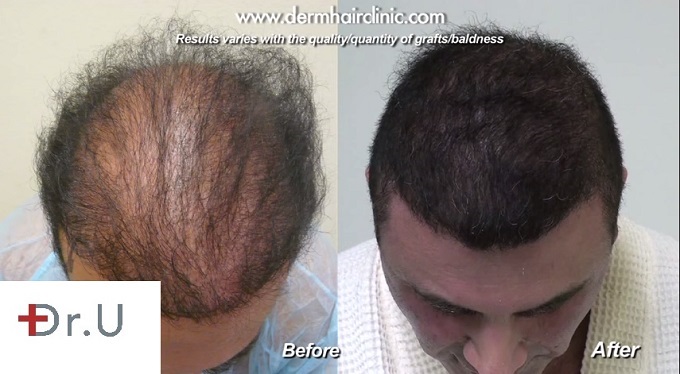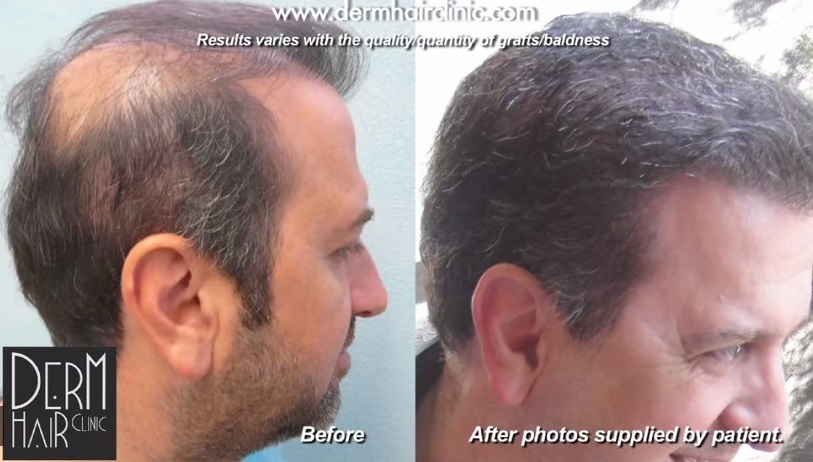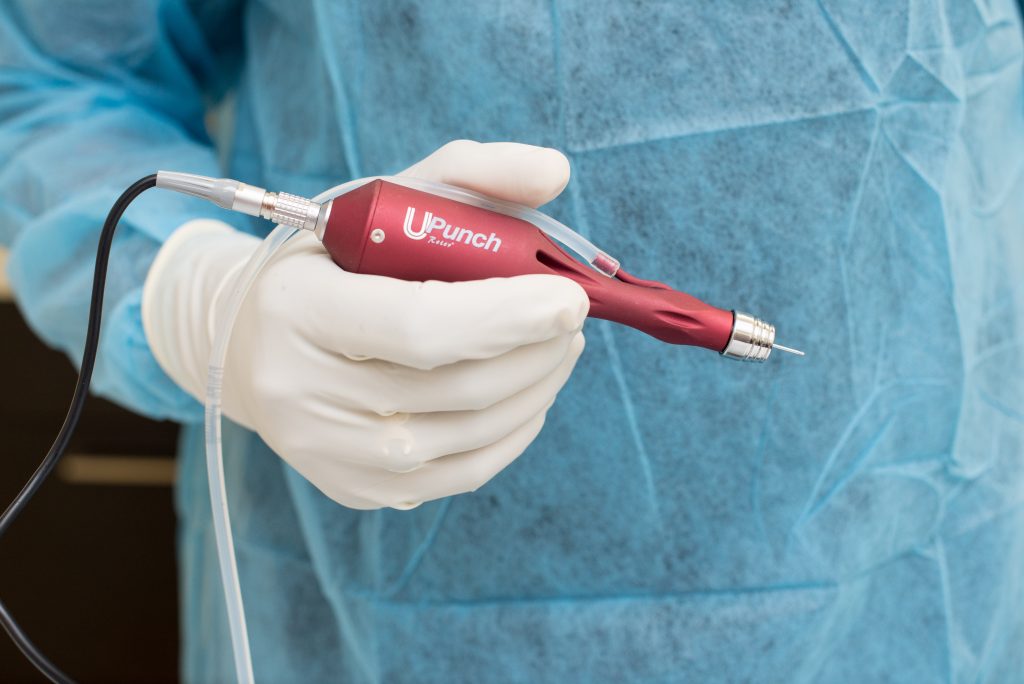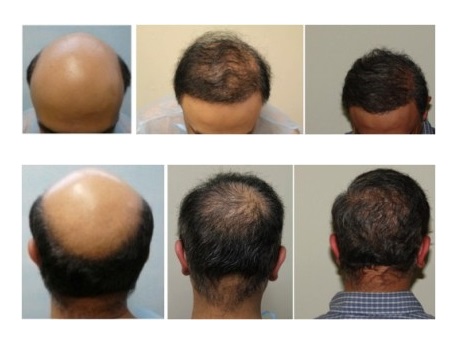
Other names include:
- facial hair transplant (FHT)
- beard hair transplant
- beard hair to head transplant
Facial Hair To Head Transplant Using UGraft in Los Angeles: Evolution of a Method
The concept of Facial Hair To Head Transplant all began with follicular unit extraction (FUE), a method in which the surgeon harvests donor hair one follicular unit (natural groups of one to four hairs) at a time. This method—first invented by Dr. Masumi Inaba circa 1980’s, which he went on to describe in a text published in 1996—made it possible to achieve a minimally invasive surgery that left little scarring and allowed for more natural-looking hairline design. FUE also widened the donor pool beyond the restrictive mid-back strip of flesh required in strip surgery.
But there remained an under served population of severely bald individuals. The sophistication of FUE did not matter in the face of a patient without sufficient head donor hair. Nothing could be done for these patients. Finally, in the 1990’s body hair transplantation became a thought.

The first recorded case of successful FUE transplantation using non-head hair was in 2001, by a Dr. Hirai et al. who reported using Facial Hair To Head Transplant to restore eyebrows. Dr. Umar has played a key role over the last decade, continuing to develop body hair transplant in order to reach a wider population of hair loss sufferers; and inventing the UGRAFT advanced FUE method to refine this nonhead hair transplantation processes. He is now the world leader in successful execution of this extremely advanced method, and is working toward gaining recognition of BHT as a global resource.
This video is a brief summary of the UGraft approach:
The groundbreaking article that included cases that had Facial Hair To Head Transplant was titled: “Hair Transplantation in Patients With Inadequate Head Donor Supply Using Nonhead Hair” is featured in the October 2011 issue of the Annals of Plastic Surgery. It describes three of Dr. U’s BHT patients—a 36, 54, and 35-year-old white male, each with insufficient head donor supply.

The third patient, the 35-year-old, was the only one with no previous surgeries. His NW 6 level of baldness was due to advanced androgenic alopecia. Nothing could have been done using head hair alone. Out of approximately 20,000 grafts derived from the body and head, nearly half were beard hair. His outcome surpassed expectations.
These results showed that beard hair (compared to other body hair) may provide the best yield in regard to long-term graft survival. Facial hair seems to be the highest caliber of all body hair, and is thus may be the most comparable in quality to head-derived grafts. This is important considering that body hair does not change in character once transplanted to a new location. In other words, arm hair will continue to grow and act like arm hair, even after implantation in the scalp.
Facial Hair To Head Transplant Using UGraft : WHAT SHOULD A PATIENT EXPECT FROM USING BEARD HAIR?
Facial hair transplant requires the use of advanced FUE technology. It is procedurally carried out in similar fashion to an FUE procedure and in the same way as BHT. A patient undergoing FHT can expect:
- The extraction of beard hair one follicular unit at a time, with the use of the UGraft which is a handheld punching tool (manual or powered) and a needle device. Never the use of any staples or stitches.

- A quick turnaround time (both donor site and recipient site healed of wounds and scabs within two weeks)
- To receive a prescription for mild pain relievers, topical medication, and antibiotics.
- Optimal growth of new hair should occur at about ten months, but can continue to improve for up to two years.

CANDIDATES FOR Facial Hair To Head Transplant Using UGraft
The use of beard hair follicles is ideal for those suffering severe baldness, who lack sufficient head donor hair to achieve global coverage through traditional surgery methods. This may include those with advanced androgenic alopecia or those with extensive scarring. Facial hair transplant is also a model procedure for those who require corrective surgery. Beard hair is excellent to fill and conceal stretched out strip scars, punch scars, or other posterior scalp scarring. The following video demonstrates a case in which facial hair only was used to repair a strip scar:
Patient Two
This next patient had undergone a strip surgery procedure before presenting to Dr. Umar. The patient had become fed up with using a hairpiece and wanted a permanent solution. He suffered a lack of head donor hair (his crown remained sparse), along with a pluggy hairline and a strip scar. Dr. Umar used 9,000 grafts derived mostly from the patient’s beard, along with some from the chest, and some from the nape for hairline refinement. The patient was very pleased with the outcome, telling Dr. Umar, “I am totally, totally, totally satisfied…I can swim, I can go in the wind. I feel free. Born again.”
If you are interested in seeing other Dr U patient who benefited from a beard hair transplant procedure, read more here.
Do a free and direct online consult with Dr Umar through this form.
Further Reading
Body Hair Transplant Wound Healing
Body hair transplant study of 122 patients findings

